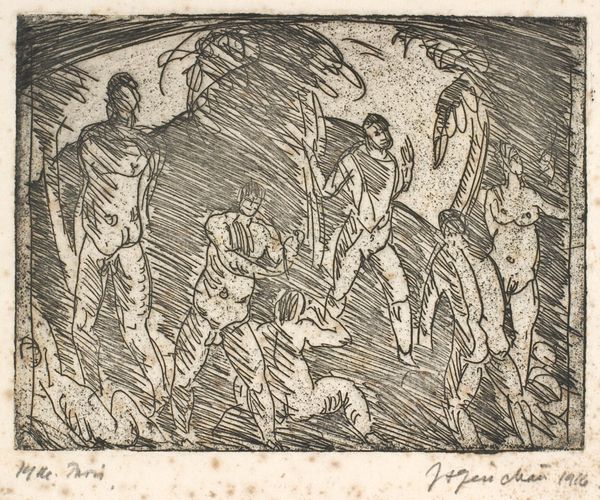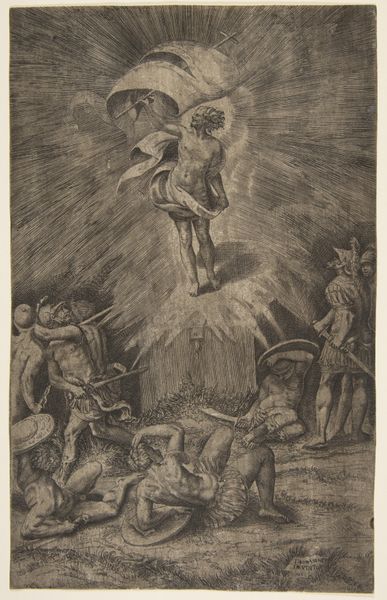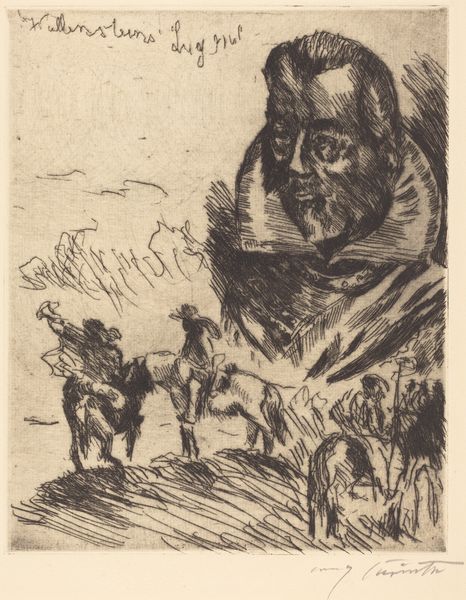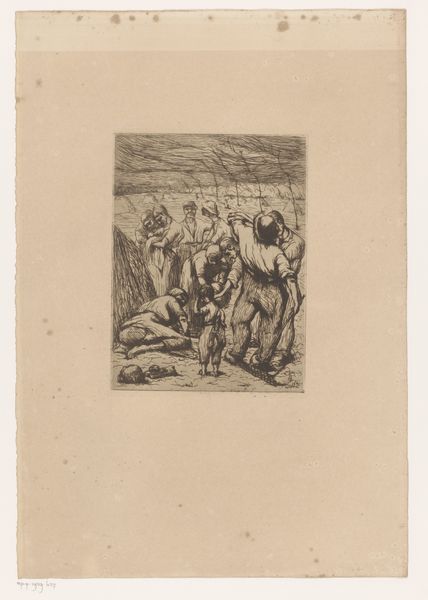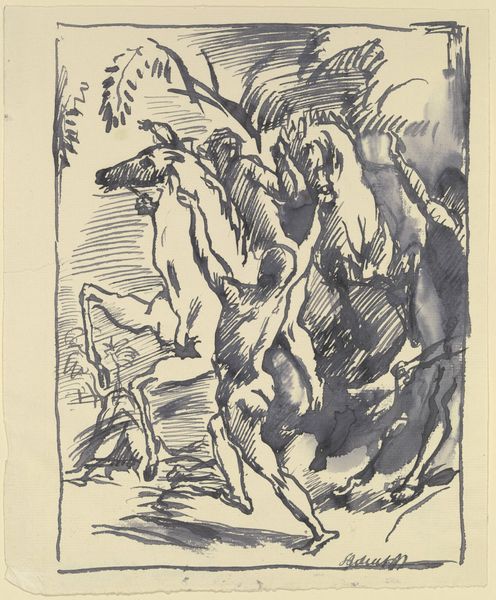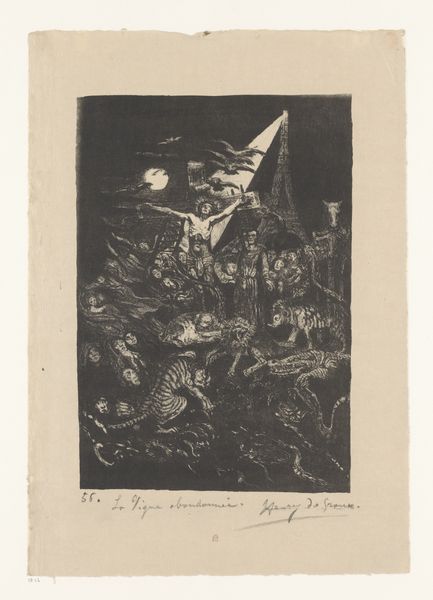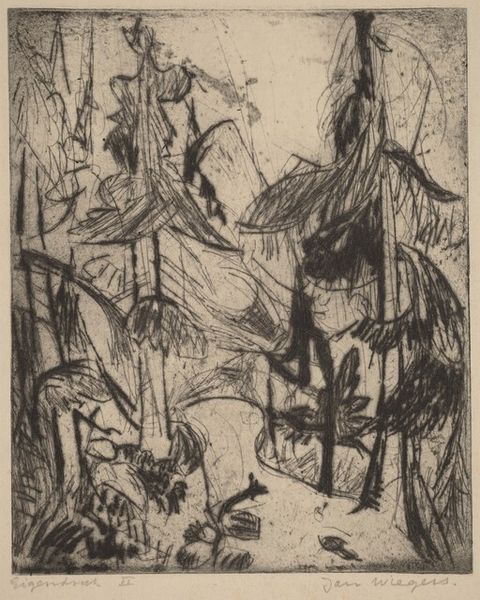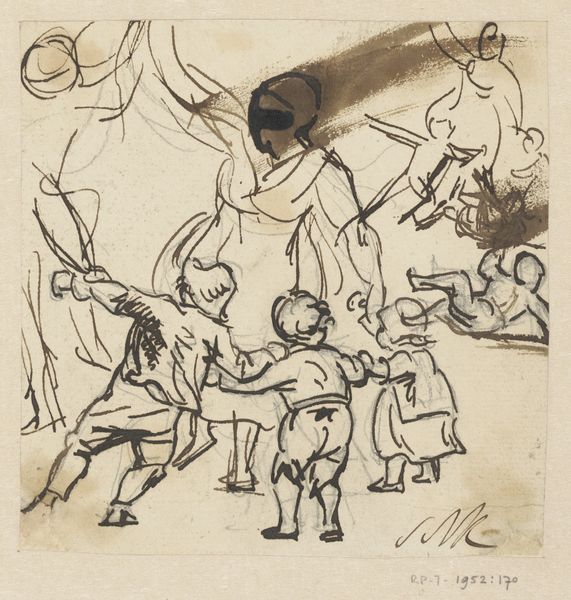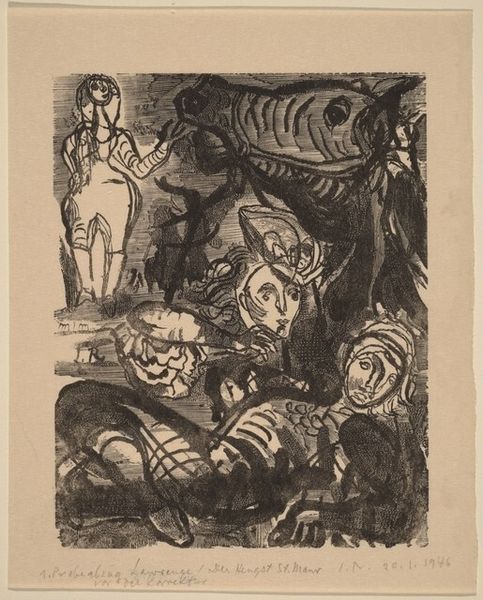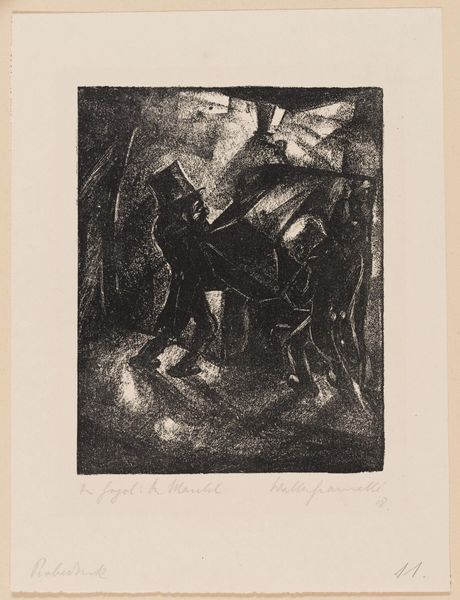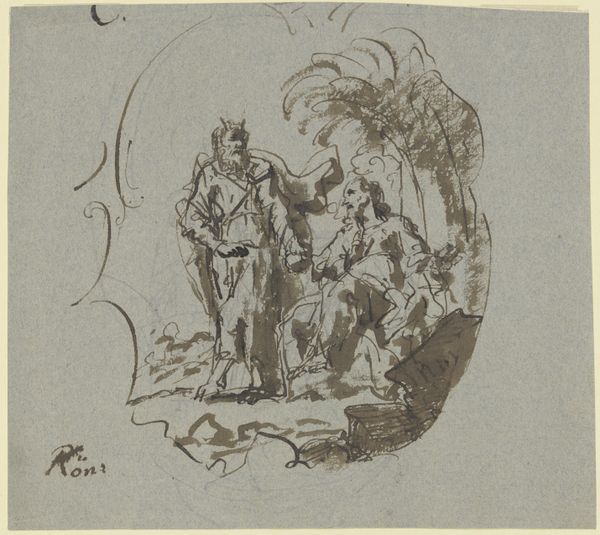
print, etching
#
narrative-art
# print
#
etching
#
figuration
#
expressionism
Dimensions: 116 mm (height) x 129 mm (width) (plademaal)
Curator: Looking at "Menneskene søger varsler," or "People Seeking Omens," created by J.A. Jerichau in 1916, made with etching. Editor: My first thought is just how raw the texture feels—like roughing up of a social contract. It almost feels like peering into an anxious, feverish dream. Curator: Absolutely, and this etching comes at a very specific historical juncture—1916, in the midst of World War I. Given that context, "seeking omens" suggests a desperate desire to understand the cataclysm unfolding and a need to look beyond reason for answers. Editor: It really speaks to the psychological disruption that kind of global event creates. I notice the use of etching really allows for such an active surface texture and you can really feel a push-pull of figures caught in states of anticipation, is something being foretold for good, bad, or ill? It also looks as if most figures here are nude—it feels ancient and primordial in how Jerichau visualizes them. Curator: Precisely. This evokes a pre-modern world. You can clearly trace the influences of Expressionism here too; we can analyze this artwork in the context of anxieties about modernity, questioning gender and the roles within the cultural structures as the role of 'seer' seems equally distributed to a few different people and even between the sexes. What material prophecies, maybe? What does an artist do but deliver us warnings about ourselves, and our world? Editor: Considering Jerichau worked during a time when printmaking was becoming more democratized, accessible for artists, is the content democratized? I notice a communal quality in those observing signs; there's a feeling of collective uncertainty but there's also solidarity, of making things, or unraveling meanings together. This suggests a breakdown in institutions but new models might exist within new access to art making processes, that aren't restricted to singular elites, almost like a redefinition in knowledge making too. Curator: What's striking to me, is that this small print acts as a kind of visual cry for meaning during chaotic times. The power dynamics shift and change over time as cultures shift but this feels uniquely aligned to the questions being asked now, and maybe every day. Editor: Yes, and the work in that case holds true to the inherent labor and skill. Looking at it gives me great pause as to who, exactly, benefits from my understanding the past.
Comments
No comments
Be the first to comment and join the conversation on the ultimate creative platform.
